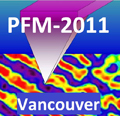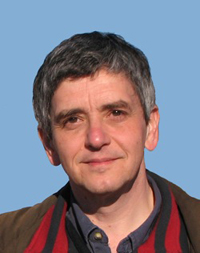Dragan Damjanovic |
Dr. Dragan Damjanovic received BSc degree in physics (summa cum laude) at the University of Sarajevo in 1980 and PhD in ceramics science (Philips Fellowship) in 1987 at the Pennsylvania State University. He worked as a research associate at Materials Research Laboratory at PSU from 1988 to 1991 on pyroelectric properties of synthetic polypeptides, piezoelectric properties of relaxor ferroelectrics, and ceramics-polymer composites. In 1991 he joined the Ceramics Laboratory, Institute of Materials, at the Swiss Federal Institute of Technology in Lausanne-EPFL where he is now a professor. He works in the field of the piezoelectric, dielectric and ferroelectric properties of ceramics, single crystals, thick and thin films, and their applications. He teaches undergraduate and graduate courses on electrical properties of materials. He has co-authored more than 170 publications. In the last ten years he participated in and directed a dozen of Swiss and European projects. He was awarded ISIF outstanding achievement award in 2007, Ferroelectrics Recognition Award of the IEEE UFFC Society in 2009, was elected a Fellow of IEEE in 2009, and serves as a distinguished lecturer of the IEEE Ultrasonics, Ferroelectrics and Frequency Control Society in 2010/11. |
|
The Ceramics Laboratory, Institute of Materials, at the Swiss Federal Institute of Technology in Lausanne-EPFL |
ON ORIGINS OF ELECTRO-MECHANICAL COUPLING IN COMPLEX MATERIALS
Electro-mechanical coupling takes many forms including electrostriction, flexoelectricity, piezoelectricity, processes that involve field induced phase transitions, and motion of interfaces. Each kind of coupling is dependent on parameters such as crystal structure, structural instabilities, defects and microstructure of material. In complex systems such as ferroelectric ceramics all these forms of coupling often take place simultaneously and their understanding and separation, essential for engineering of properties, is in most cases difficult. These difficulties are obvious in particular with present efforts to develop new high-performance lead-free substitutes for Pb(Zr,Ti)O3-based piezoelectrics.
In this presentation recent results in the field will be discussed within such general framework. The emphasis will be on contributions to electro-mechanical coupling from motion of domain walls, their configuration and interaction with defects and the nature of the morphotropic phase boundary.
It will be demonstrated that structural (in)stabilities are probably the most important characteristic of morphotropic phase boundaries. The role of “bridging phases” in the morphotropic region will be discussed within the same approach. It will be shown how understanding of structural instabilities can lead to engineering of better properties in practical materials.
The contributions of motion and presence of domain walls on electro-mechanical properties are discussed in light of recent results on (i) ceramics and crystals with engineered domain wall configuration and on (ii) frequency and field dependence of material parameters. Evidence will be presented that domain wall displacement appears to have a more complex role in controlling properties of ferroelectrics than previously thought. Understanding of domain-wall related processes to the electro-mechanical coupling may be one of the keys for developing new high performance materials.
Finally, several examples of unexpected electro-mechanical coupling will be presented.







